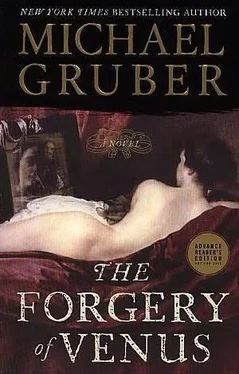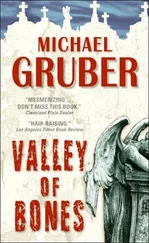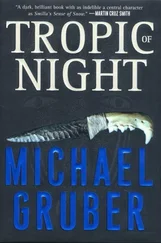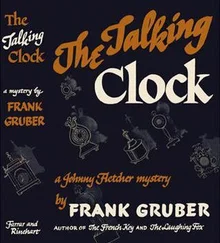Nor was I silent while this was going on; I called her a money-grubbing bitch, I seem to recall, and we had a screaming match right there with the silly mannerist Virgins looking down on us, and the guards came and told us we had to leave. She ran out and I walked out, and when I got to the street she was gone. I hailed a cab of my own. The cabbie figured I was a rich tourist and took me on the scenic route back to the hotel, north and down through the crazy Vatican-area traffic, and I was too miserable to bitch. She’d left the hotel too, no note. I called her cell phone, but she declined to answer. When the message tone came on I couldn’t think of anything to say.
So after that I checked out of the hotel and returned to the forger’s nest. Sophia greeted me cheerfully when I passed her in the hall, as if I’d never left, but I suspected they knew pretty much what had gone down. I’m not paranoid or anything, but I do a lot of people-watching myself and I know that when you concentrate your attention on people they sooner or later get hip to it. I had been conscious of eyes on me for the past couple of days.
The odd thing was that I didn’t sink into an orgy of self-contempt the way I would have previously when something like that happened. It was like my real life-Lotte and the kids and New York-had become just another alternative life, one of several now available, and so the rejection didn’t sting the way it once had. Nothing is real, and nothing to get hung about, as the Beatles used to say. And the money, that universal balm. People also used to say love will get you through times of no money better than money will get you through times of no love, but that’s only partially true. Money’s not everything, sure, but neither is it nothing.
And the other thing was I really liked being Velázquez. I remembered vividly what it was like to paint like him, I’d actually done that portrait, and I thought if they could put that experience into powder form, no one would ever look at crack cocaine.
Ispent the next morning staring at the cleaned canvas on the easel. Baldassare had changed the size a little, a couple of inches off each dimension, but I didn’t bother to ask him why. Nor did I touch a brush; I just stared at the white. I’d been studying the radiographs published in Brown and Garrido and in various mono-graphs to get some idea of what his underpainting was like. The problem with Velázquez in his mature period was that he was so good he barely did any preliminary work. Aside from a few question-able sketches of the Pope’s portrait, there are no Velázquez sketches at all. None. The bastard just painted. He laid in the ground with a big brush or a palette knife in flake white and grays made with ochre and azurite, varying it according to the composition of the painting. When he had that right he drew in the figures directly, what they call alla prima painting, and then used diluted pigments to color them, so that the light ground and sometimes even the grain of the canvas showed through, a totally bravura technique, which is why nobody but an idiot tries to forge Velázquez.
All the confidence I’d felt briefly at the Doria in front of Innocent X had vanished with Lotte, as did my pleasure in my new wealth. Because in order to get that wealth, of course, I had to put paint on canvas, which just now I seemed disinclined to do. And as the good light faded I had plenty of time to consider the cowardice of Charles Wilmot, Jr., the Chaz of all my memories, the real reason why he wasn’t really a million-dollars-a-painting guy, not the market, not the art appreciation business at all, just the pure funk, because now, when it really counted, the big leagues, an actual million-dollar commission, Chaz doesn’t show up.
I blew a couple of days like that, just looking at the damned canvas. Baldassare came in once and told me he’d sized the old canvas with a secret water-soluble compound. The point of this was to fill the cracks in the seventeenth-century ground I’d be painting on, so that the new paint wouldn’t sink into it. After the forgery was done and dried, he’d dip the whole thing in water and the sizing would dissolve out; with a little bending and shaking the surface would conform to the old cracks, and bingo! Instant craqueleur.
I asked him to give me a couple of new stretched canvases in the same dimensions and texture, because I figured I’d be better off easing into it, do a test run, as it were, get comfortable with the paint and the style. And the model. So I started looking at Sophia and she started looking at me, you know, a little discreet flirting around dinnertime, smiles, increasingly warmer, little jokes. It turned out Franco wasn’t that interested, not that he would’ve kicked her out of bed-nor would I have-but not interested. That was all I needed now, given the thing with Lotte. I’d called her cell phone half a dozen times but she never called back.
Which pissed me off, and so I asked Sophia out for a drink after dinner, and she took me to a bar, Guido’s, over by Santa Maria, full of local people now in winter with most of the tourists gone. She was known there, she chatted with friends in the Roman dialect that I could barely follow. We spoke to each other in English, mainly, and I got her story. She’d done art at La Sapienza; there was a guy, an Australian she’d gotten involved with; then she became pregnant and he split, and there she was with little Enrico, dropped out of school with no degree and no prospects for a job. She was working as a madonnaro, drawing holy pictures on the sidewalk in front of churches for tips. Then her mother had called Baldassare, a cugine, it turned out, and he’d brought her into the family business.
She did mainly seventeenth-century drawings-Cortona, the Caracci, Domenichino-and helped out with paintings on fake Italian provincial antiques. I asked her whether it bothered her, the faking, and she said no, why should it? Romans had been faking art for bàbbioni tourists since BC. She was good at it, used only the best materials, genuine paper from old books and the right inks, and she had the style down. She’d done a Cortona Christ on the Cross that’d fetched thirty thousand euros at a German auction, and that kind of wage certainly beat some low-end curatorial job at a provincial museum.
A little defensive there, I thought, but it turned out that she wasn’t abashed at all, but envious. I was the big-time gunslinger brought in for this gigantic coup. Baldassare had told her all about it, but, she said, he doesn’t think you can do it. I asked her if he’d actually told her that, and she said yeah, he said you don’t have le palle sfaccettate. That’s what you need in this business. You know what that means? I didn’t. It means balls with hard edges, like a crystal.
I said, we’ll see, and then I asked her if she ever modeled, and she said not really, but Baldassare thought that she’d be right for this picture and asked her if she’d do it, and of course, what could she say? And the boy too, he said they’d need a child. I said that was right and asked her why she thought she’d do for the figure, and she said, you want someone like the Rokeby Venus, don’t you? With which she got up and walked slowly away and then back again and into her chair, grinning like a cat. Bellesponde, as they say. A narrow waist and a pear-shaped bottom, longish legs. Her face was what they call “interesting,” the features a little over-large for real beauty, nose too long, chin a little small, but she had a mass of thick, dark hair with coppery highlights, and in any case I was going to make up the face, for obvious reasons.
We drank some more and then some friends of hers came by and started in with the Romano chatter, and I got my pad out and started futzing around, and then as usual they saw what I was doing and I made drawings of each of them. Everyone was impressed, as usual. If this didn’t work out, I thought, I could always become a madonnaro myself.
Читать дальше












